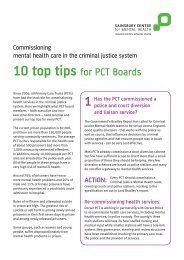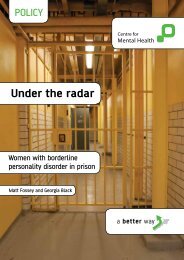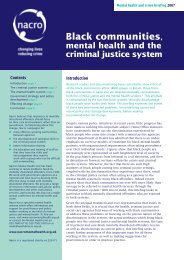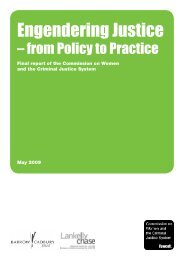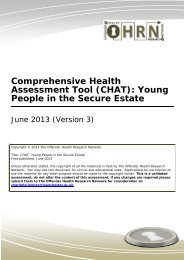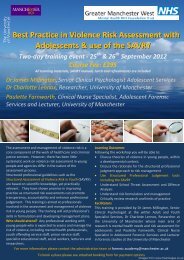Physical Control in Care Training Manual - Independent Advisory ...
Physical Control in Care Training Manual - Independent Advisory ...
Physical Control in Care Training Manual - Independent Advisory ...
Create successful ePaper yourself
Turn your PDF publications into a flip-book with our unique Google optimized e-Paper software.
PHYSICAL CONTROL IN CAREConsideration of the above factors will enable staff to determ<strong>in</strong>ewhether to physically <strong>in</strong>tervene.INTER-PERSONAL SKILLSThe use of physical force must never be used as a first option. Theuse of force must not be used to replace the ability and will<strong>in</strong>gness ofstaff to use their <strong>in</strong>ter-personal skills to successfully resolve difficultconfrontational <strong>in</strong>cidents.A NON TAKE DOWN POLICY (Prone or Sup<strong>in</strong>e)With<strong>in</strong> the PCC system there are no techniques which deliberatelytake a young person <strong>in</strong>to the prone or sup<strong>in</strong>e position. There aretechniques that require the young person to be placed onto theirknees <strong>in</strong> order to ma<strong>in</strong>ta<strong>in</strong> the safety of all <strong>in</strong>volved <strong>in</strong> the <strong>in</strong>cident.The PCC system aims to ma<strong>in</strong>ta<strong>in</strong> the young person <strong>in</strong> a stand<strong>in</strong>gposition. In the event of the restra<strong>in</strong>t hav<strong>in</strong>g to be conducted with<strong>in</strong> aprone or sup<strong>in</strong>e position the hold(s) can be ma<strong>in</strong>ta<strong>in</strong>ed and the youngperson brought to a stand<strong>in</strong>g position at the earliest opportunity, orreleased.With<strong>in</strong> the system provision is made to physically hold the youngperson who is already <strong>in</strong> a prone or sup<strong>in</strong>e position, but once aga<strong>in</strong>the young person must be brought to their feet at the earliestopportunity, or released.DE-ESCALATIONThe de-escalation of physical holds placed on the young person bystaff is of paramount importance. The PCC system is designed toencourage staff to systematically down-grade and ease hold(s). Theultimate aim is to release all physical holds on the young person assoon as practical and safe for all concerned.HOLD RELEASE OPTIONWhere cont<strong>in</strong>ued application of physical holds by staff on a youngperson becomes unsafe for the young person or staff the hold(s) mustbe released. Safety of all <strong>in</strong>volved with the restra<strong>in</strong>t is the priority. AllPCC holds and systems have the hold release option <strong>in</strong>cluded.© National Offender Management Service National Tactical Response GroupJuly 201010






